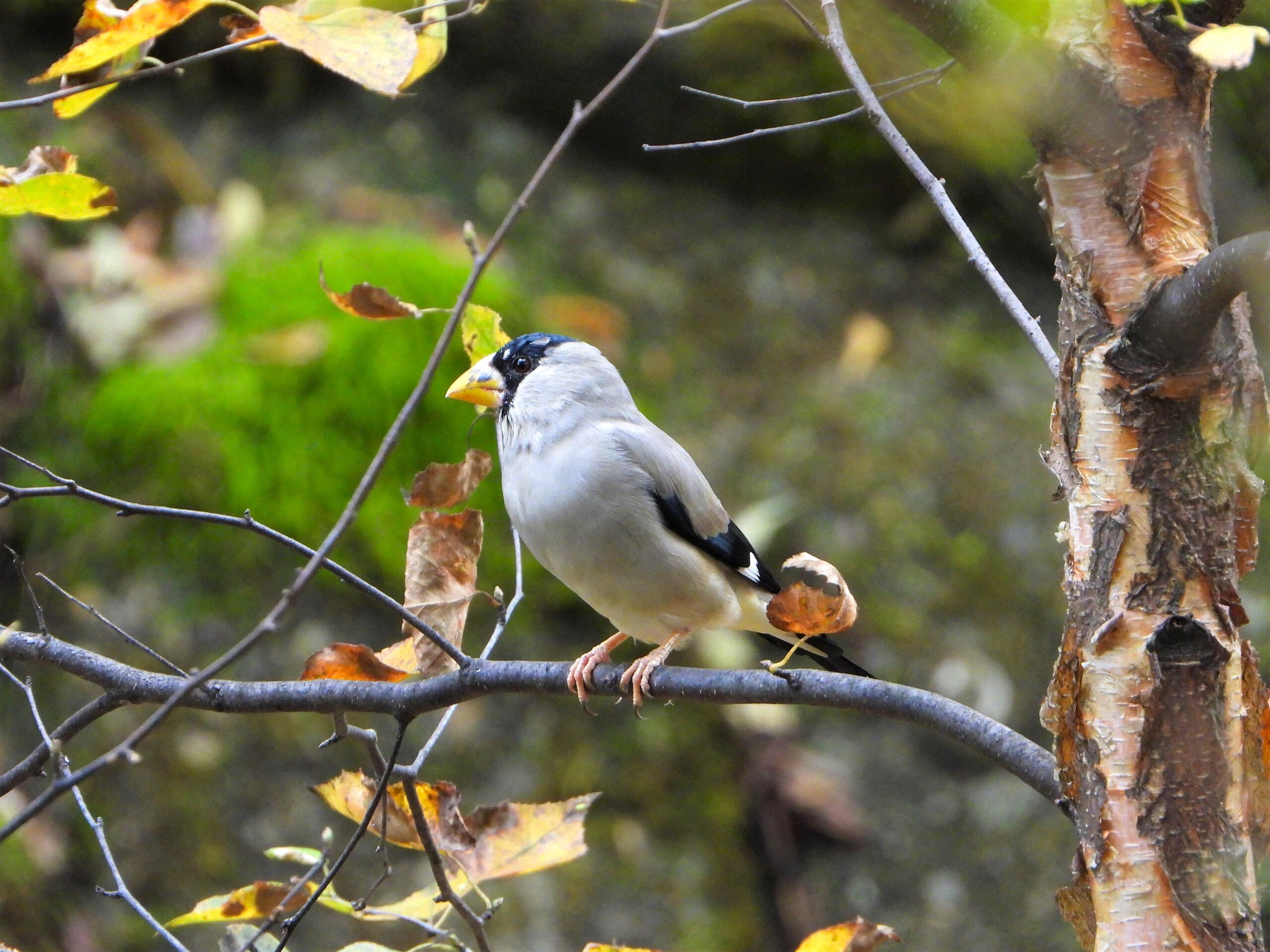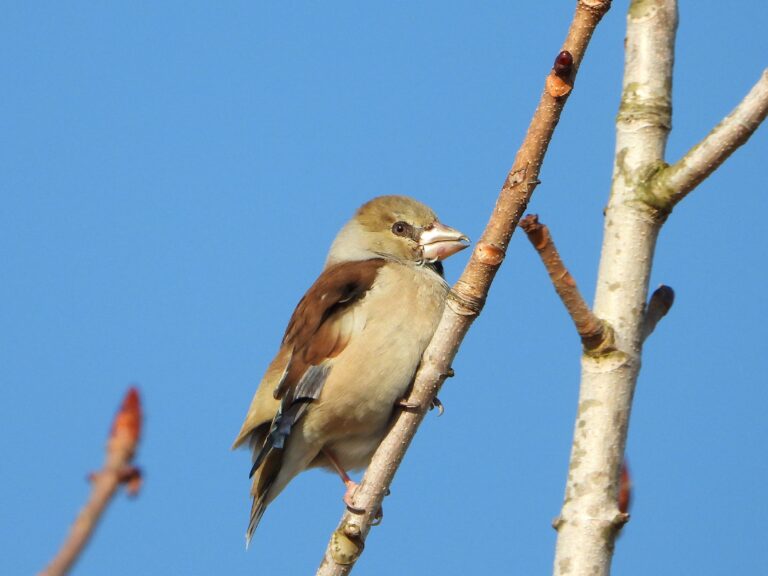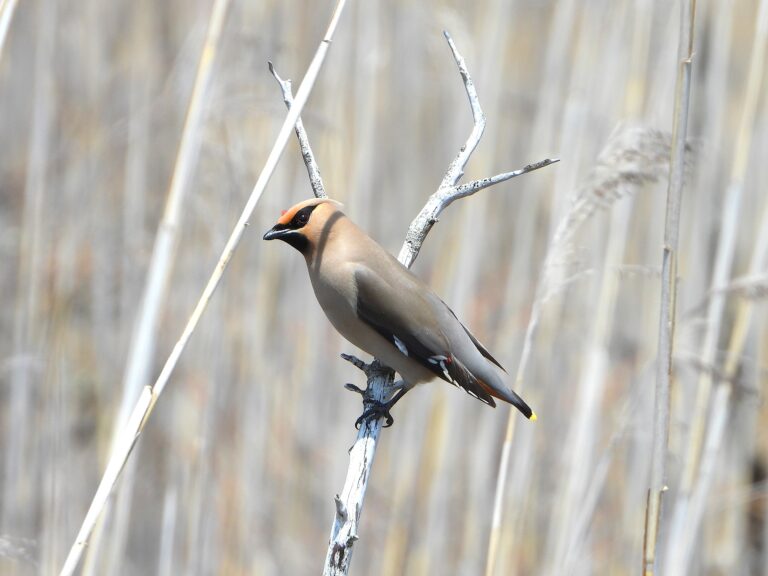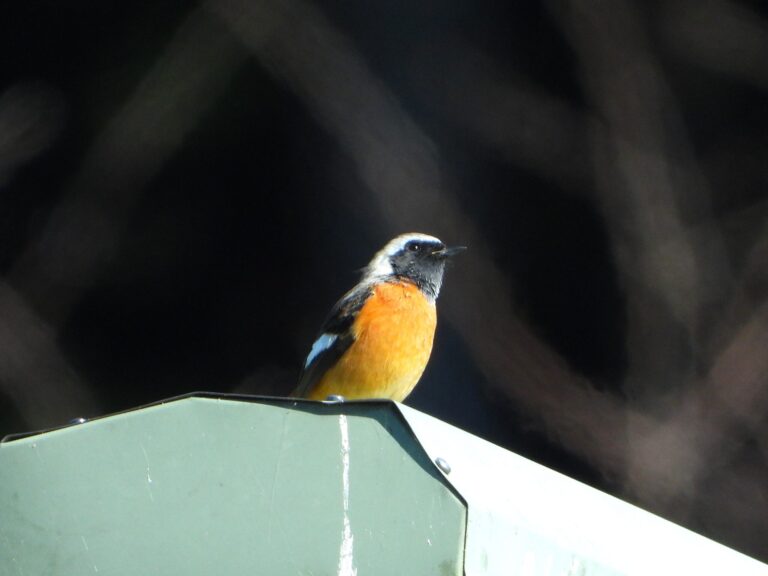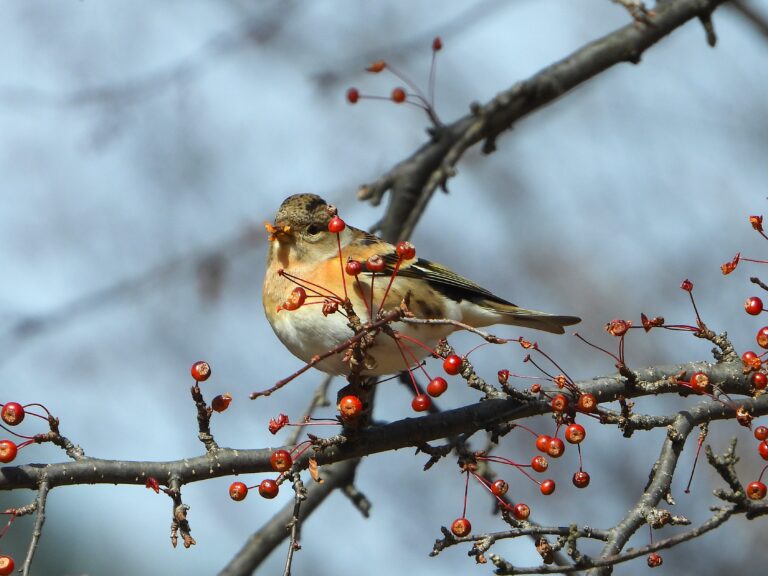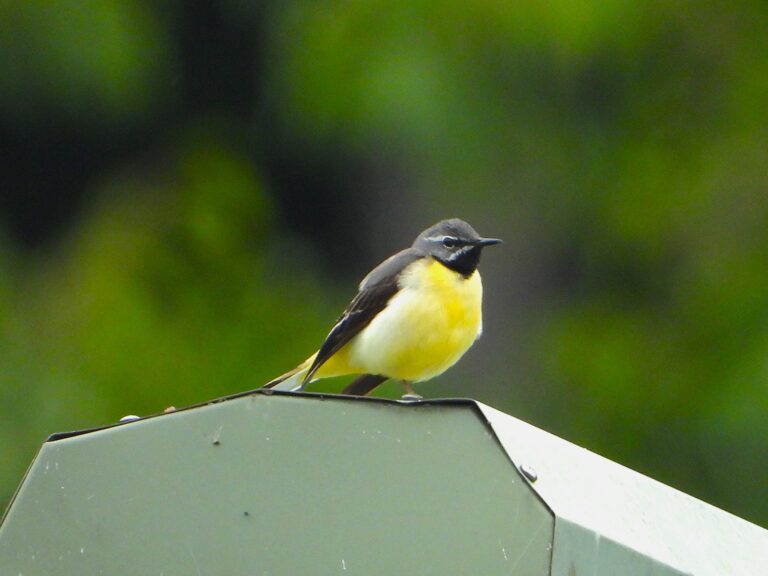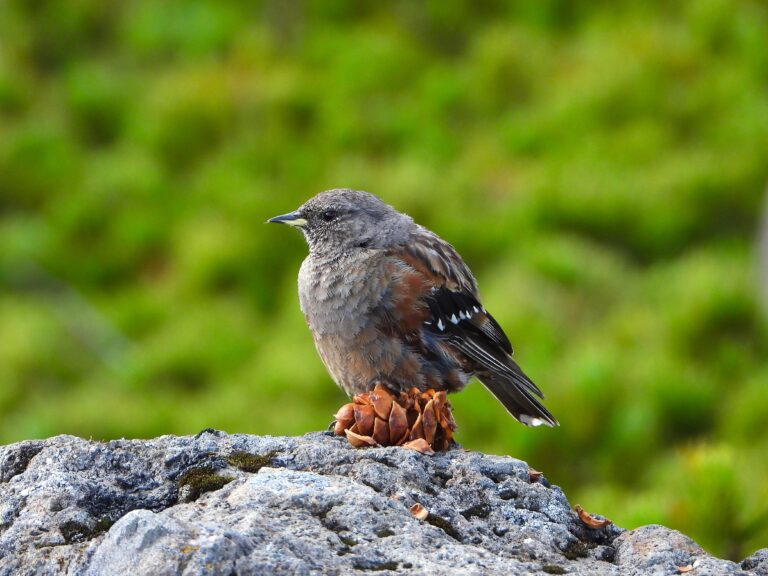Japanese Grosbeak (Eophona personata) – Wildlife of Japan
Introduction
With its massive yellow bill and pure, flute-like whistles, the Japanese Grosbeak is a familiar voice in Japan’s forests. During winter, it often descends to lowland parks and temple groves, sometimes forming sizable flocks that brighten the quiet season.
Appearance
Measuring about 23 cm in length, this stocky finch has a pale gray-brown body, a striking black “mask” over the face and crown, and a bold white wing patch. The thick yellow bill is unmistakable. Males and females look similar.
Habitat & Distribution
The species favors broadleaf and mixed forests, as well as mature groves and forest edges. In Japan, it breeds from Hokkaido through Honshu, Shikoku, and Kyushu, moving to lower elevations in winter. Beyond Japan, it occurs in East Asia and is listed as Least Concern by the IUCN.
Where to See in Japan
Listen for the clear, whistling “kee-ko-kee” calls echoing through wooded parks and temple grounds, especially in the non-breeding season. In winter, flocks often appear in well-wooded city parks and rural lowlands, making this species easier to observe than in summer.
Behavior
The powerful bill cracks hard seeds and pits; birds typically forage high in the canopy, moving between fruiting trees. In winter they often form flocks. Flight is undulating, as in many finches.
Diet
Mainly seeds and nuts, especially those of zelkova, hackberry, and maples. Small fruits are also eaten, and insects may be taken opportunistically during the warmer months.
Author’s Impression
On quiet winter mornings, that clear, flute-like whistle often sounds before the bird is seen—a sturdy, masked finch with a bill seemingly built to crush marbles.
In some parts of Japan, people say that when the grosbeak sings loudly, rain is coming. Perhaps it’s only a folk belief, but hearing that gentle song drifting through humid air before a shower gives the saying a certain truth.

